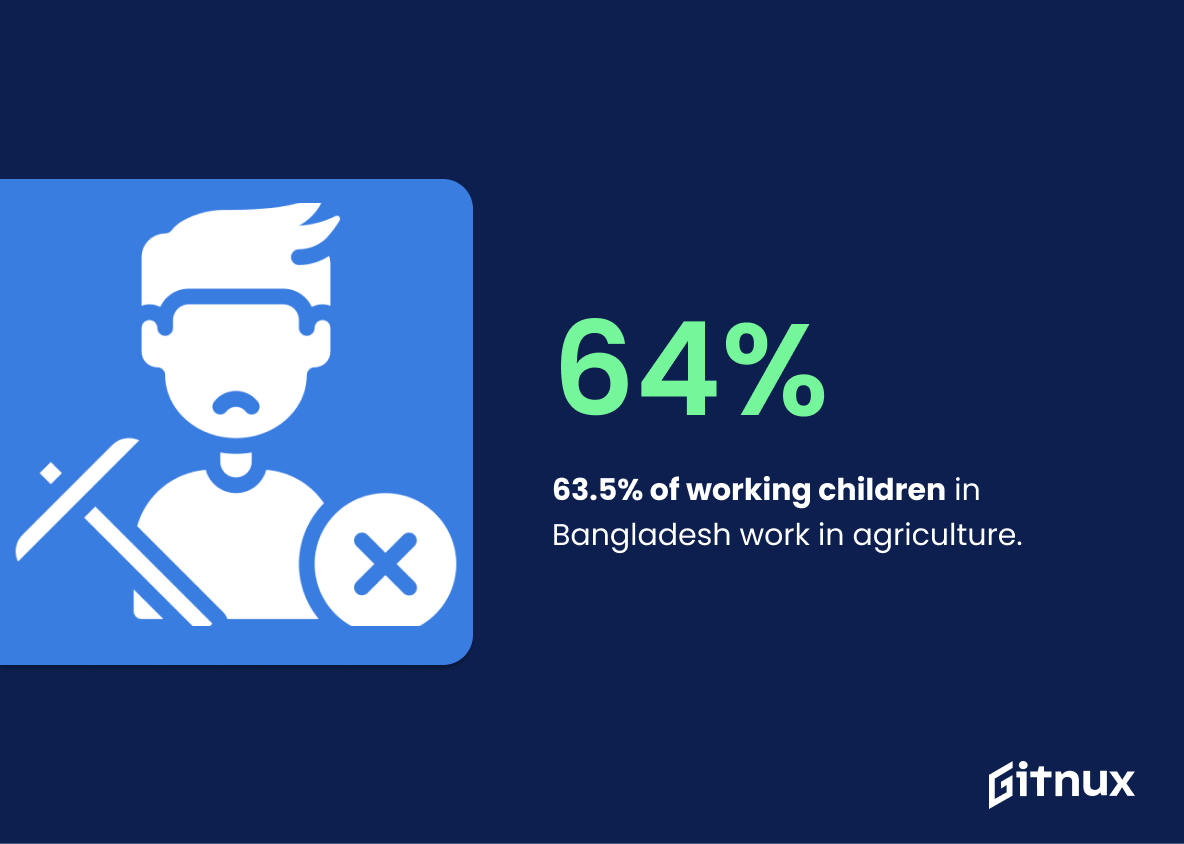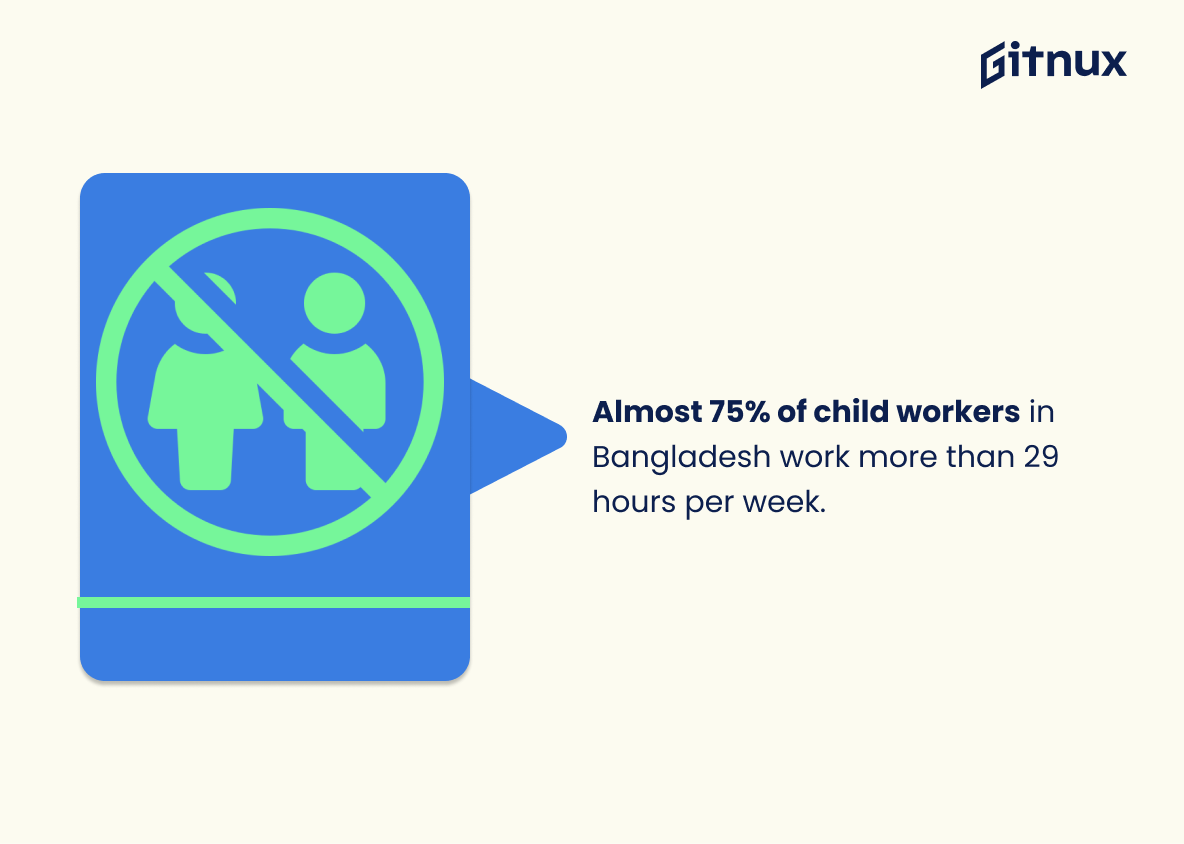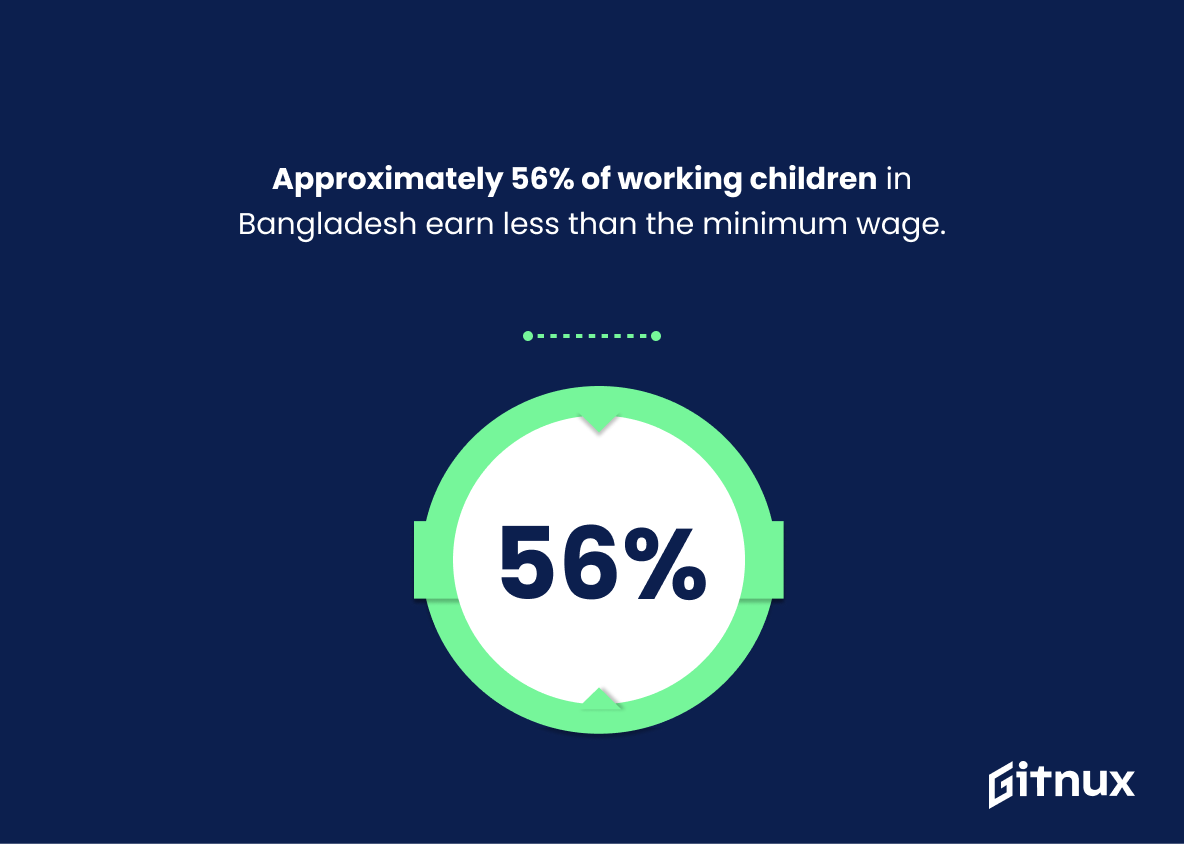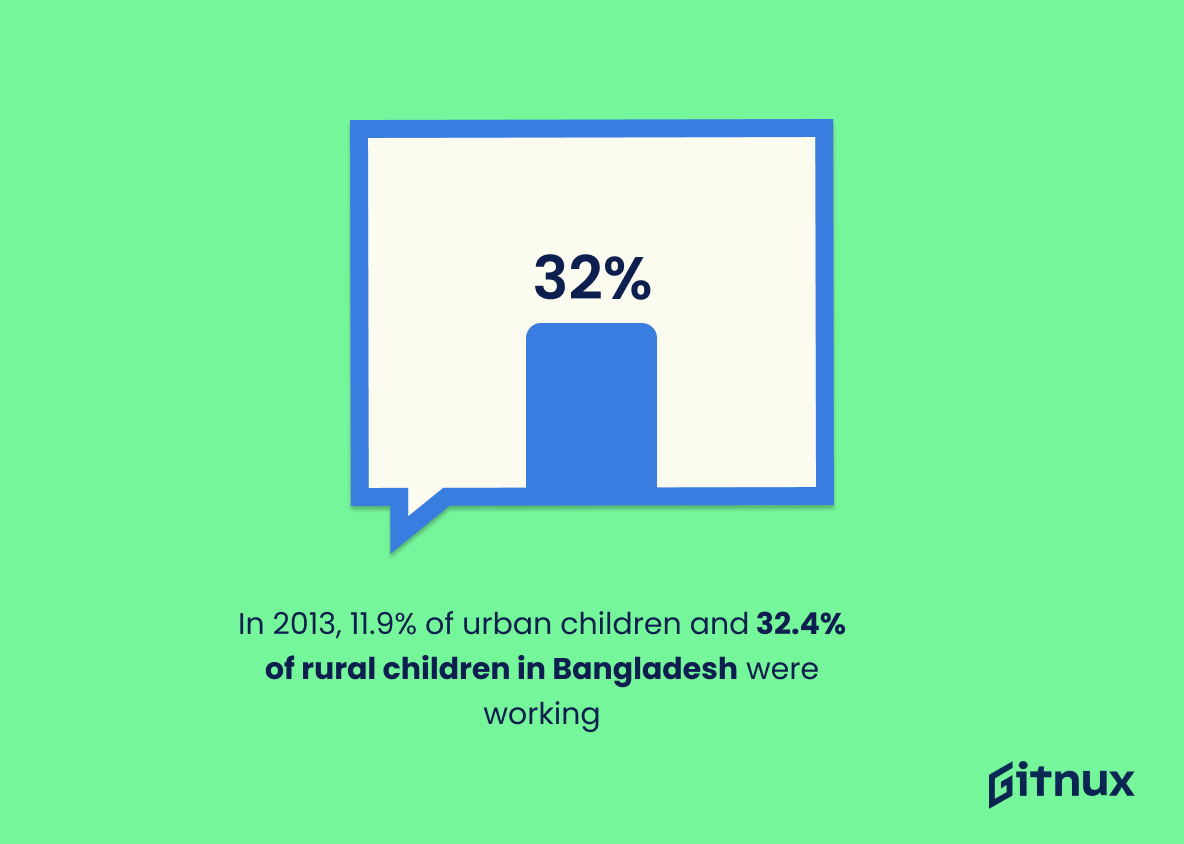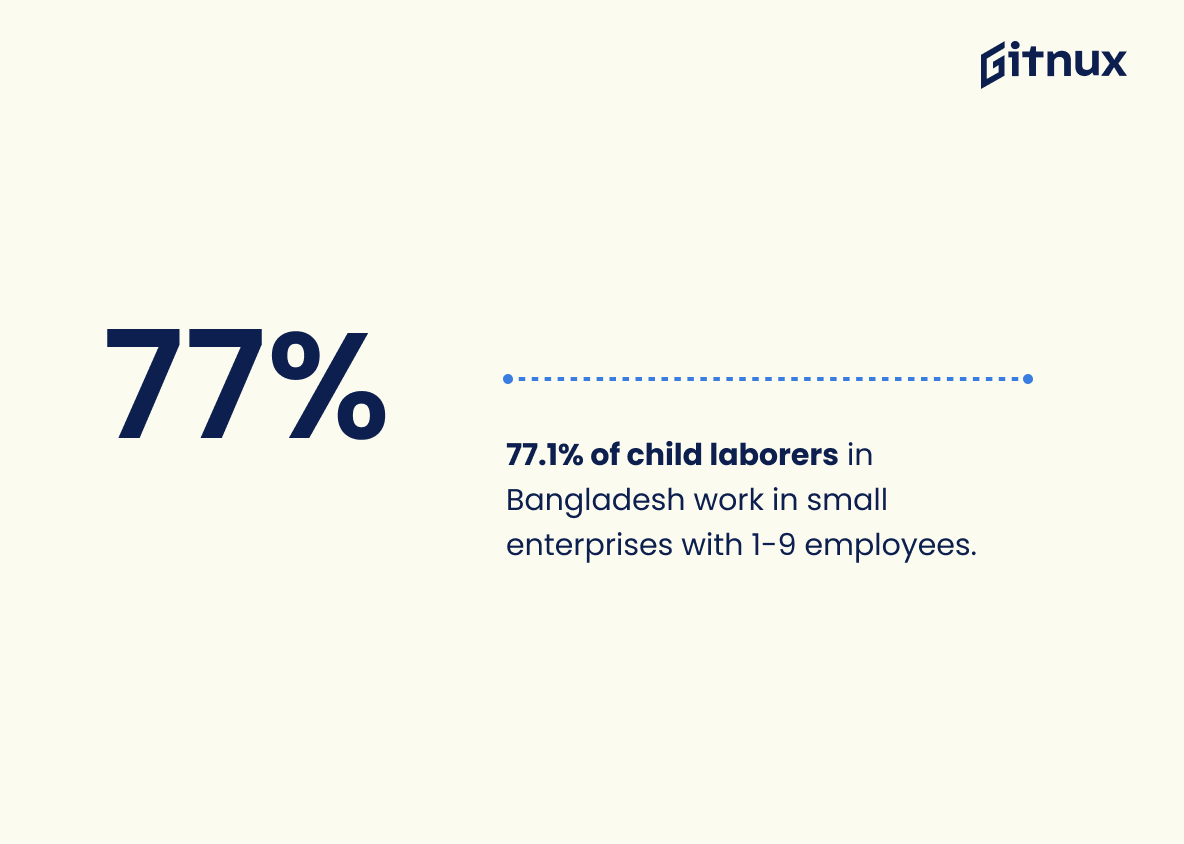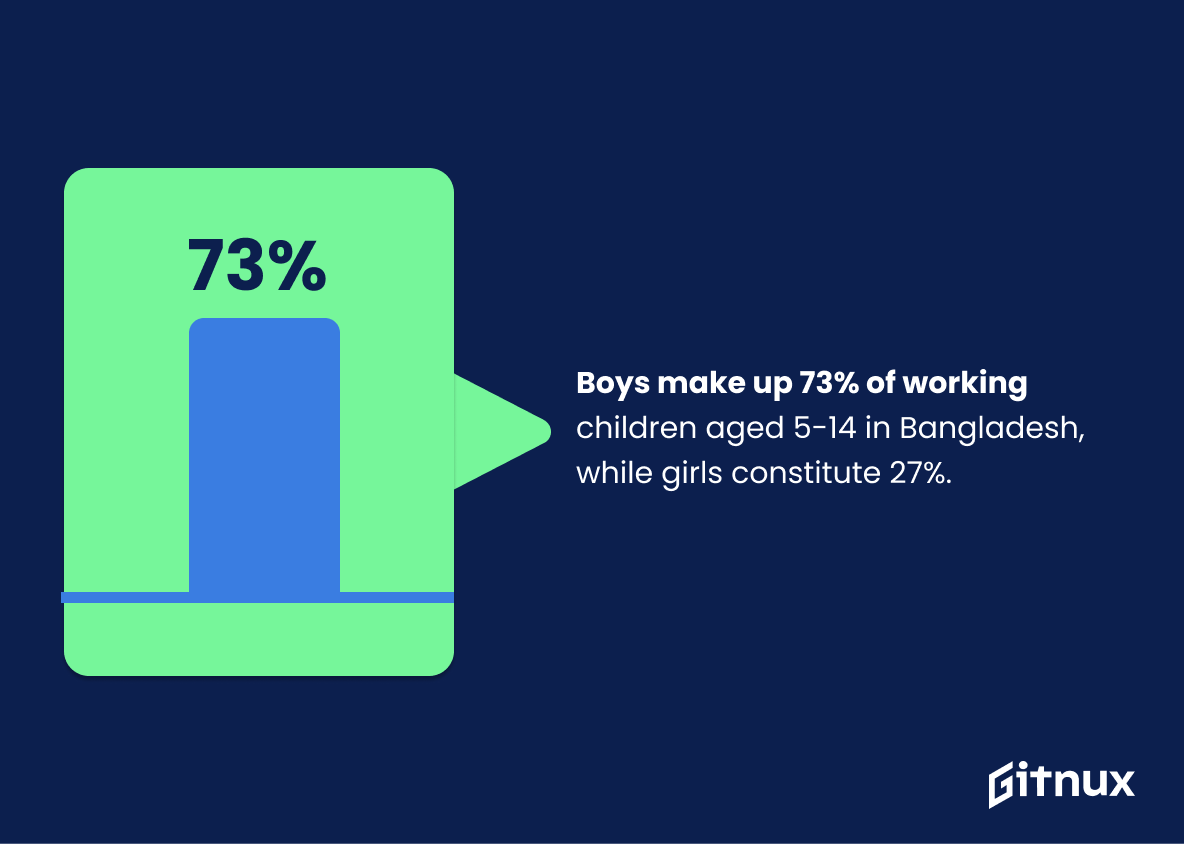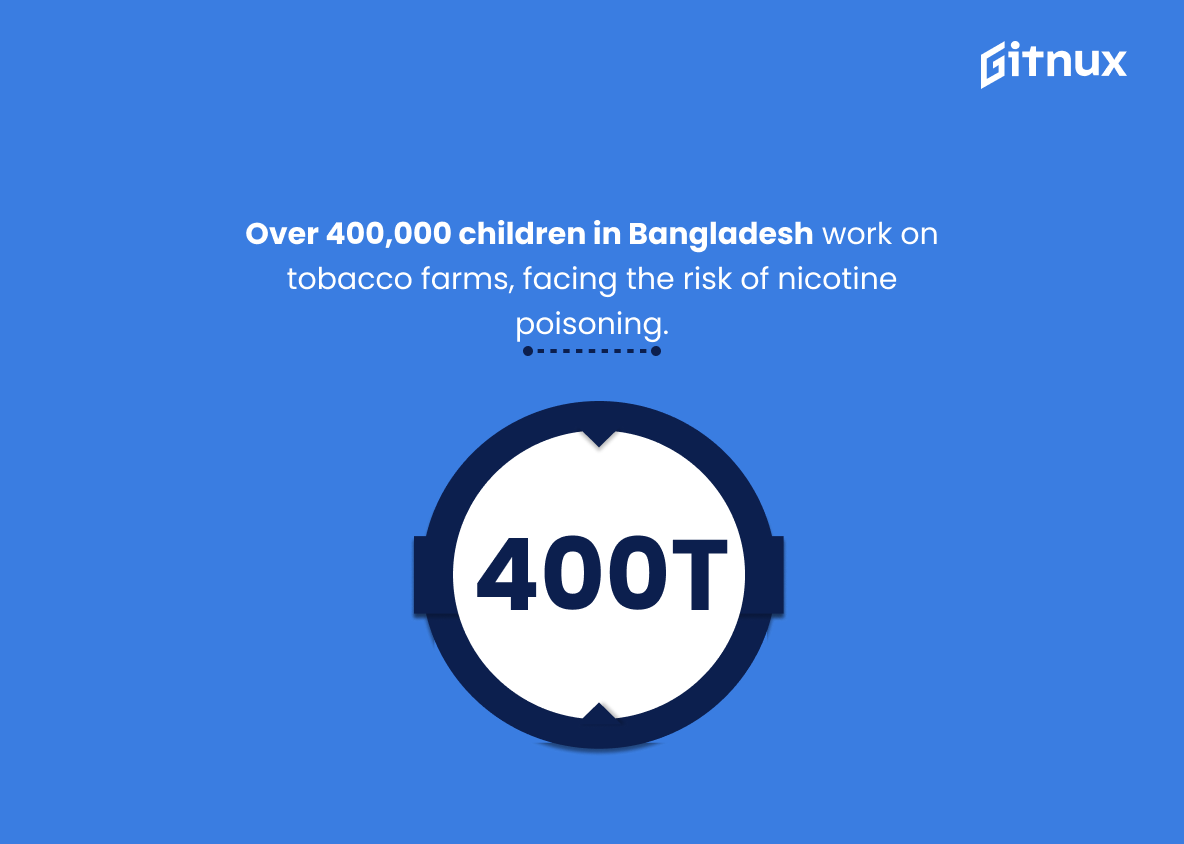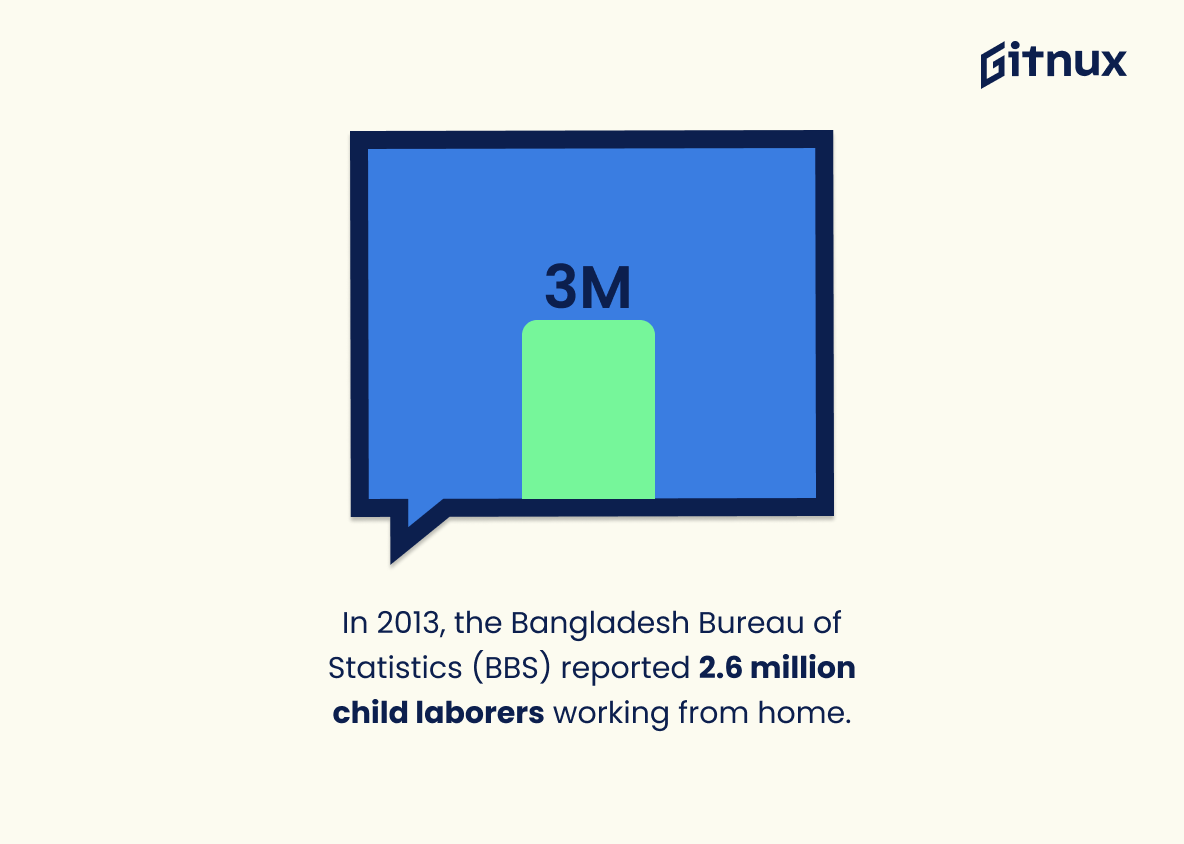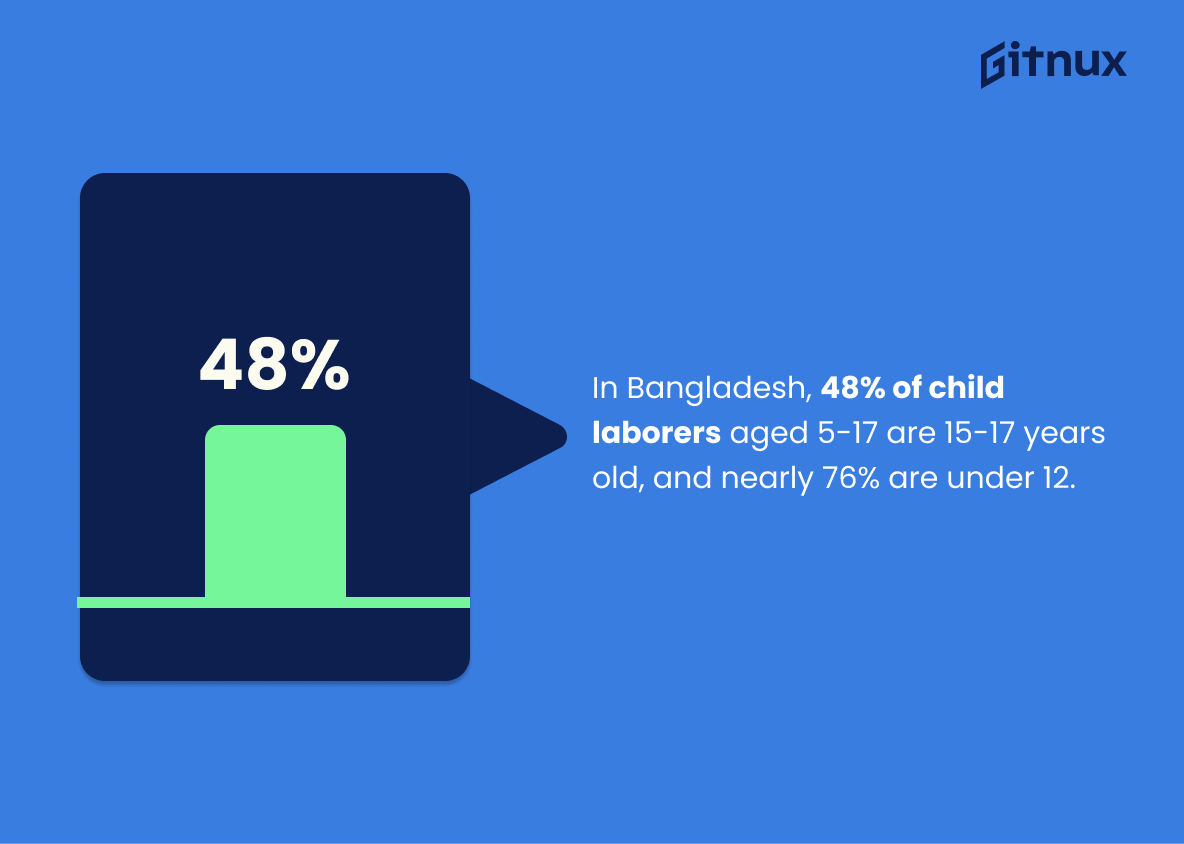Child labor is a major issue in Bangladesh, with an estimated 1.2 million children engaged in child labor across the country. This blog post will explore some of the statistics related to this problem and discuss how it affects both individuals and society as a whole. We’ll look at data from various sources such as UNICEF, World Bank, International Labour Organization (ILO), Bureau of Statistics (BBS) and more to get an understanding of the scope of this issue in Bangladesh. Additionally, we’ll examine initiatives taken by the Government of Bangladesh towards eliminating child labor within its borders by 2021 for worst forms and 2025 for all forms altogether. Finally, we’ll consider what can be done on an individual level to help combat this global challenge that disproportionately impacts developing countries like Bangladesh
Bangladesh Child Labor Statistics Overview
63.5% of working children in Bangladesh are employed in the agricultural sector.
This statistic is a stark reminder of the prevalence of child labor in Bangladesh, particularly in the agricultural sector. It highlights the need for greater efforts to protect children from exploitation and to ensure that they are able to access education and other opportunities that will help them to reach their full potential.
In Bangladesh, 86.8% of child laborers aged 5-17 work in hazardous conditions.
This statistic is a stark reminder of the dire reality of child labor in Bangladesh. It paints a picture of the immense suffering endured by the young workers, who are exposed to hazardous conditions and deprived of their right to a safe and healthy childhood. It is a call to action for all of us to take a stand against this injustice and ensure that the children of Bangladesh are protected and given the opportunity to thrive.
Every day, about 10,000 children work in the recycling industry in Dhaka, Bangladesh.
This statistic is a stark reminder of the prevalence of child labor in Dhaka, Bangladesh. It paints a vivid picture of the harsh reality that thousands of children face every day, being forced to work in the recycling industry instead of attending school or playing with friends. It serves as a call to action to those who are in a position to help, to take steps to reduce the number of children in the workforce and ensure that they have access to a safe and secure future.
Almost 75% of child workers in Bangladesh work more than 29 hours per week.
This statistic is a stark reminder of the harsh reality of child labor in Bangladesh. It paints a picture of the grueling hours that children are forced to work, with almost three-quarters of them working more than 29 hours a week. This statistic serves as a reminder of the need to take action to protect the rights of children in Bangladesh and to ensure that they are not subjected to such long hours of labor.
About 56% of working children in Bangladesh are underpaid, receiving less than the country’s minimum wage.
This statistic is a stark reminder of the injustice faced by working children in Bangladesh, highlighting the fact that a majority of them are not receiving the wages they deserve. It serves as a call to action, emphasizing the need for greater efforts to ensure that these children are paid fairly and in accordance with the country’s minimum wage.
In 2020, the Government of Bangladesh launched a National Plan of Action on the Elimination of Child Labor in the country, targeting to end the worst forms of child labor by 2021 and all child labor by 2025.
This statistic is a beacon of hope for the future of Bangladesh’s children. It shows that the government is taking a proactive stance in tackling the issue of child labor, setting ambitious goals to end the worst forms of child labor by 2021 and all child labor by 2025. This is a positive step forward in the fight against child labor in Bangladesh, and it is a reminder that progress is possible.
In 2013, about 11.9% of children aged 5-17 were working children in urban areas, while 32.4% were working in rural areas of Bangladesh.
This statistic is a stark reminder of the prevalence of child labor in Bangladesh, particularly in rural areas. It highlights the need for greater awareness and action to address the issue of child labor in the country. It also serves as a call to action for those in positions of power to take steps to ensure that children are not exploited for labor and are instead given the opportunity to pursue their education and develop their skills.
77.1% of child laborers in Bangladesh work in small enterprises consisting of 1-9 employees.
This statistic is a powerful indicator of the prevalence of child labor in Bangladesh, as it shows that the majority of child laborers are employed in small enterprises. This highlights the fact that child labor is not only a problem in large-scale industries, but also in small businesses. It is a reminder that the issue of child labor is pervasive and needs to be addressed on all levels.
Boys in Bangladesh account for 73% of working children between the ages of 5-14, and girls 27%.
This statistic is a stark reminder of the gender inequality that exists in Bangladesh when it comes to child labor. It highlights the fact that boys are disproportionately more likely to be working at a young age than girls, and that girls are being denied the opportunity to receive an education and pursue other opportunities. This statistic is a call to action to address the gender disparities in Bangladesh and ensure that all children have the same opportunities to succeed.
At least 400,000 children work on tobacco farms in Bangladesh, and they are exposed to nicotine poisoning from handling tobacco leaves.
This statistic is a stark reminder of the harsh reality of child labor in Bangladesh. It highlights the fact that hundreds of thousands of children are being exposed to nicotine poisoning, a serious health hazard, simply because of their age and lack of access to other employment opportunities. This statistic serves as a call to action to ensure that all children in Bangladesh are protected from such dangerous working conditions.
About 67% of working children in Bangladesh are not involved in any type of formal schooling.
This statistic is a stark reminder of the reality of child labor in Bangladesh. It paints a picture of the immense number of children who are being deprived of their right to education and are instead being forced to work in order to support their families. This statistic is a call to action for those who are in a position to make a difference and to ensure that all children in Bangladesh have access to the education they deserve.
In 2013, the Bangladesh Bureau of Statistics (BBS) estimated that the number of child laborers working at home was 2.6 million.
This statistic is a stark reminder of the prevalence of child labor in Bangladesh. It paints a vivid picture of the millions of children who are being deprived of their right to a childhood and instead are being forced to work in hazardous conditions. It serves as a call to action for the government and citizens of Bangladesh to take steps to end this injustice and ensure that all children are able to enjoy their right to a safe and secure childhood.
More than 42.3% of working children in Bangladesh work in shops or services.
This statistic is a stark reminder of the prevalence of child labor in Bangladesh. It highlights the fact that more than 42.3% of working children in Bangladesh are employed in shops or services, a situation that is far from ideal. This statistic serves as a call to action to address the issue of child labor in Bangladesh and ensure that children are able to access education and other opportunities that will help them reach their full potential.
In Bangladesh, 48% of child laborers aged 5-17 are between the ages of 15 and 17. Almost 76% of the child laborers aged 5-17 are below the age of 12.
This statistic is a stark reminder of the prevalence of child labor in Bangladesh, particularly among the younger age groups. It highlights the fact that a large proportion of children aged 5-17 are being forced to work, with the majority of them being under the age of 12. This is a concerning issue that needs to be addressed in order to ensure that all children in Bangladesh are able to enjoy their childhood and receive an education.
Conclusion
The statistics presented in this blog post demonstrate the prevalence of child labor in Bangladesh. Approximately 1.2 million children are engaged in child labor, with 4.9% of children aged 5-14 employed and 63.5% working in the agricultural sector alone. Furthermore, 86.8% of these workers are exposed to hazardous conditions while 56% receive less than minimum wage for their work hours that often exceed 29 per week on a casual employment basis – making it difficult for them to access education or other opportunities available to non-working peers as 67% do not attend school at all and 13%, paid work only accounts for a small portion (87%) compared to unpaid family work .
In response, the Government has launched initiatives such as National Plan of Action on Elimination Child Labor which aims towards ending worst forms by 2021 and all forms by 2025; however there is still much progress needed before we can see an end to this issue especially when considering how many young people between 15-17 years old (48%) make up part of those affected along with 76 % below 12 years old who should be enjoying childhood instead being forced into labouring activities like tobacco farming where they risk nicotine poisoning from handling leaves or recycling industry where 10 000 kids daily face dangerous environment without proper protection measures taken care off .
Overall , although some steps have been made towards reducing numberof chilren involvedin labour activites , more needs done if we want ensure safe future generations free from exploitation
References
0. – https://www.arise.foundation
1. – https://www.dhakatribune.com
2. – https://www.ncbi.nlm.nih.gov
3. – https://www.researchgate.net
4. – https://www.blogs.worldbank.org
5. – https://www.data.unicef.org
6. – https://www.savethechildren.org.uk
7. – https://www.hrw.org
8. – https://www.ilo.org
9. – https://www.aljazeera.com
10. – https://www.globalgiving.org
11. – https://www.dol.gov
12. – https://www.gfdrr.org
